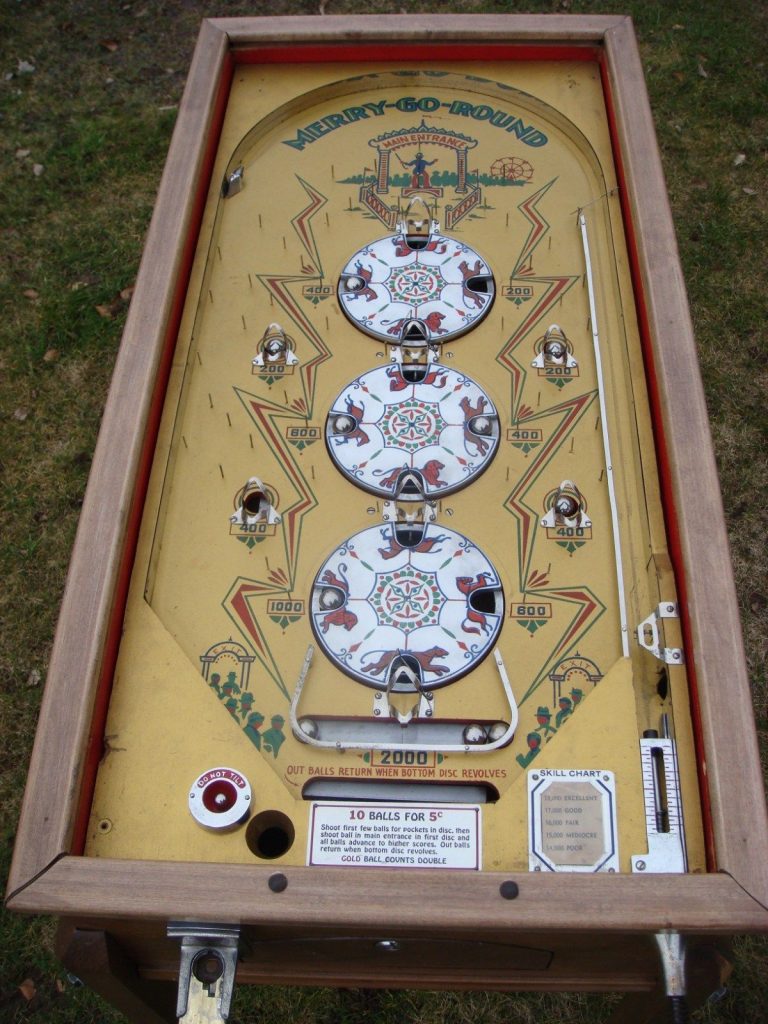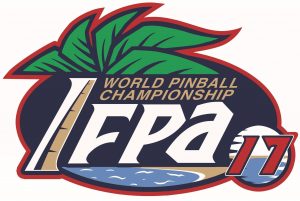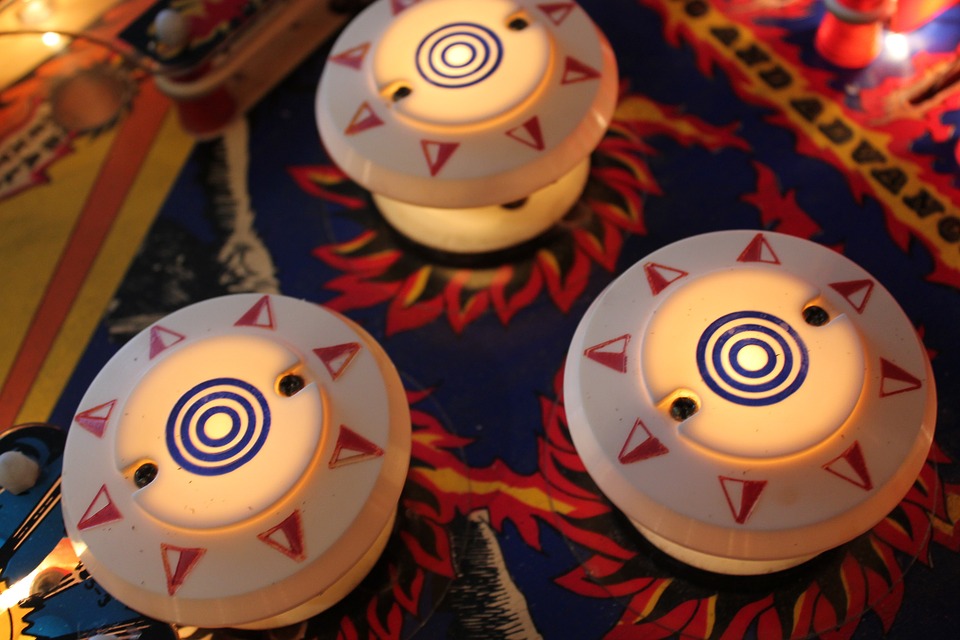Thus far in class, we’ve made a couple visits to the Strong, had class lectures on pinball machines, and watched Tilt: The Battle to Save Pinball – a documentary illustrating the dying days of the pinball industry. Particular topics that I find interesting regarding pinball’s legacy include the historical impact of earlier prototypes during the Great Depression, the rise and resurgence of competitive pinball, and the invention of bumpers on the playfield.
During the Great Depression
Pinball’s journey during the Great Depression began with the founding of D. Gottlieb & Co. in 1927 in Chicago, IL under David Gottlieb. The company began mass-marketing early pinball/bagatelle machines during the Great Depression (The Los Angeles Times). Some of the games they released within this historical time are Baffle Ball (1931), Speedway (1933), and Merry-Go-Round (1934), among many others (ipdb – list of Gottlieb games).


It is important to note that none of these early pinball machines had flippers, not until 1947 – they were primarily luck-based games. Players could nudge and tip the machines to influence the ball, but couldn’t change the game’s fate directly. This eventually led to its illegalization in 1947 (History). These games, especially Baffle Ball, were very popular. Assembly-line production of these machines commenced and over 75,000 units were sold, according to the notes we took in class. Prior to 1932, these machines were flat and put on top of tables. Battery-operated machines started to appear in 1933, and by 1934, some could plug into electrical outlets for sound, lighting, and other features (ThoughtCo).
Pinball was highly profitable during the Great Depression because many people were out of work and spent a lot of time in bars and lounges, where these machines were located. It was fairly cheap to play and entertaining for many, especially in a time where stress and hopelessness among the population was high.
Competitive Pinball
Although we didn’t talk much about it in class, I was interested in looking into the history of pinball competitions and how it is still alive and well in the present day, long after the golden years of pinball. When the topic of pinball tournaments is mentioned, there are two key companies that play a large role – The International Flipper Pinball Association (IFPA) and The Professional & Amateur Pinball Association (PAPA).

Retrieved from https://www.ifpapinball.com/
The IFPA began in the early 1990s and hosted four pinball competitions before falling inactive in 1995. The organization created the World Pinball Player Rankings to establish an official ranking system for pinball. In 2008 (judging by the player rankings recorded), they had a resurgence. Now, they organize championships at State, National, and International levels every year (About the IFPA).
Similarly, another famous organization responsible for hosting pinball competitions, PAPA, was founded in the mid 1980s by Roger Sharpe and Steve Epstein in New York City. They ran six world championship tournaments before retiring and passing the company to Kevin Martin. According to Epstein, the concept for PAPA began in the late 1970s. They developed a league scoring system that was used for the first time around 1985/1986, and the tournaments started in the 1990s. Unfortunately for PAPA, a severe flood rolled in to the facility in 2004 and destroyed two hundred and thirty-two pinball machines. The facility was rebuilt and championships were held again in August 2005. Since then, the company has now turned to a non-profit organization after donating to the Replay Foundation, which continues to operate the machines and tournaments under PAPA’s brand name (About PAPA).
The first six World Pinball Championships tournaments were held annually in February starting in 1991, with a three-year gap between 1995 and 1998 (PAPA 1-6 World Championships). PAPA’s most recent competition, Pinburgh 2018, featured more than 300 pinball machines and 840 players over the span of three days (Pinburgh 2018). It seems that competitive pinball has been on the rise in the past decade.
Bumpers on the Playfield
Bumpers, which became an integral part of pinball in later years, were invented in 1936. They are round-shaped targets that can add points to a player’s score or set the stage for other kinds of actions when hit by the ball. The invention of bumpers replaced pins and pockets, better serving the purpose of being more fashionable and interactive than the former. There are two distinct categories of bumpers – active and passive.

Active bumpers are the most common kind of bumper; they push away the pinball when struck. The active bumper has donned many names over the years, including thumper bumper, by Williams Electronics on their game Saratoga released in 1947. Eventually, Williams decided on calling them jet bumpers instead, but other companies such as Gottlieb and Bally called them pop bumpers and thumper bumpers respectively. There is also the disappearing bumper, which is a type of active bumper that can move below the playfield under certain conditions, or “disappear”, and the top becomes part of the playfield (ipdb – bumpers). A list of pinball games that use the disappearing bumper includes Sea Wolf (1957 and 1959 versions) and Metro (1961) by Williams, and Cirqus Voltaire (1997) by Midway (Games with Disappearing Bumpers).
Passive bumpers look a lot like active bumpers, but they do not push the ball away on contact. A prime example of a passive bumper is the mushroom bumper, popularized by Bally in the 1960s/1970s. The mushroom bumper lifts a disk on top of the bumper when it is hit and activates a switch that registers the impact (ipdb – bumpers).
References/Citations (In order of Use)
- The Los Angeles Times, “The Car Drives it” https://www.latimes.com/archives/la-xpm-2001-nov-01-tt-64157-story.html
- The Internet Pinball Database – list of Gottlieb games https://www.ipdb.org/search.pl?mfgid=93&sortby=date&searchtype=advanced
- History – That Time America Outlawed Pinball https://www.history.com/news/that-time-america-outlawed-pinball
- ThoughtCo – The History of Pinball and Pinball Machines https://www.thoughtco.com/history-of-pinball-1992320
- About the IFPA https://www.ifpapinball.com/menu/about/about-the-ifpa/
- About PAPA https://papa.org/about-papa/
- PAPA 1-6 World Championships https://papa.org/competitions/papa-world-championships/papa-1-6-world-championships/
- Pinburgh 2018 https://papa.org/competitions/pinburgh/pinburgh-2018/
- Internet Pinball Database – Bumpers https://www.ipdb.org/glossary.php#Bumper
- Games with Disappearing Bumpers, https://www.ipdb.org/search.pl?ft=disappearing.bumper&sortby=date&searchtype=advanced
- Notes from class lectures
